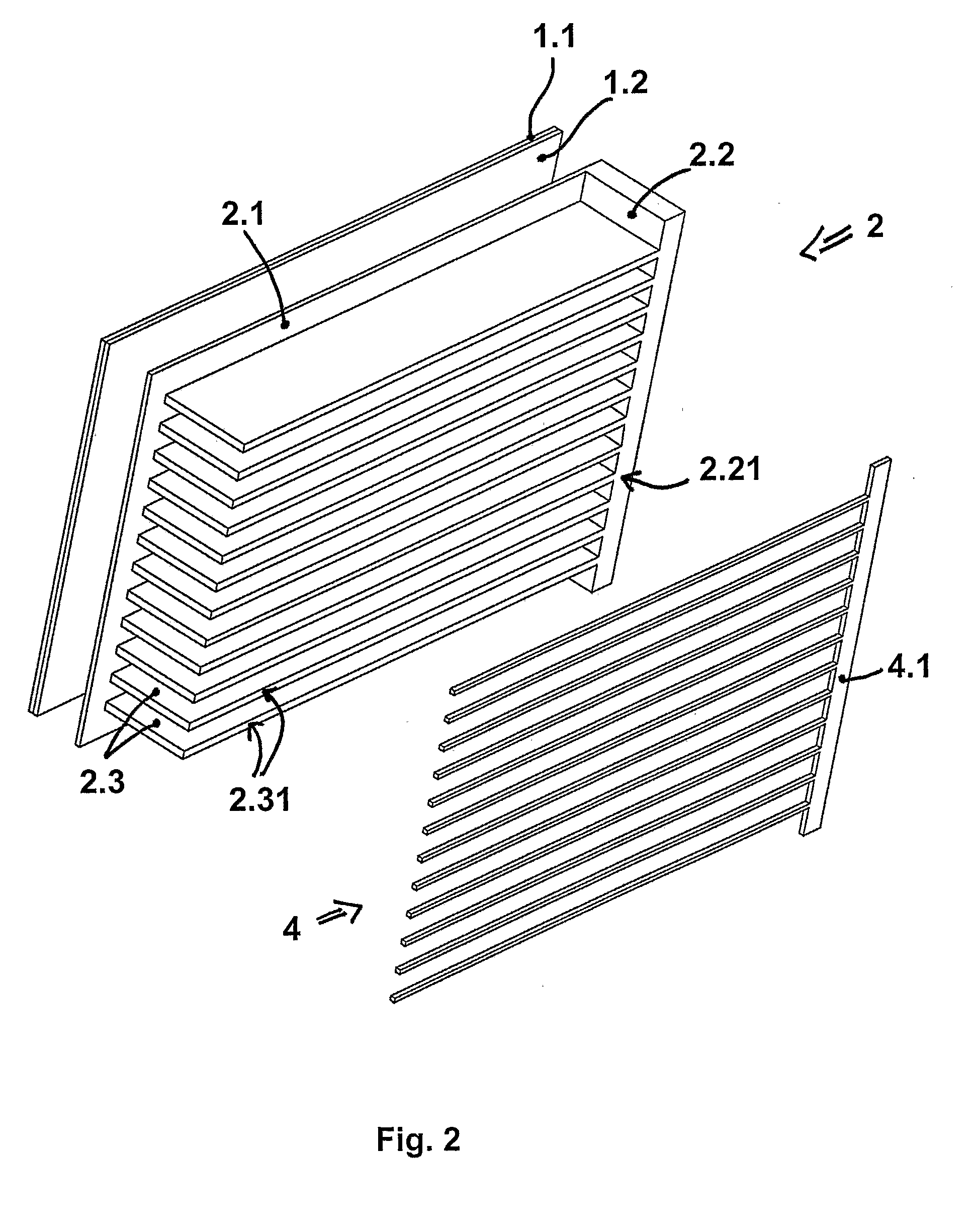Back-Contacted Photovoltaic Device
a photovoltaic cell and back contact technology, applied in the direction of photovoltaic energy generation, electrical equipment, basic electric elements, etc., can solve the problems of increasing the risk of a chip breaking in the final manufacturing stage the deterioration of the photovoltaic cell, and the crucial issue of the screen printing process, so as to increase the effective surface area and increase the temperature of the silicon. , the effect of high efficiency
- Summary
- Abstract
- Description
- Claims
- Application Information
AI Technical Summary
Benefits of technology
Problems solved by technology
Method used
Image
Examples
Embodiment Construction
[0047]The new photovoltaic device is of the back-contacted type, i.e. it has the positive contacts (4) and the negative contacts (5) located on the rear of the device.
[0048]The new device comprises a front emitter (2) made of a p- or n-doped semiconductor material, coupled with at least one rear part (3) made of an n- or p-doped semiconductor material, the front part (2.1) of said emitter (2) being connected to a plurality of metal contacts (4) located on the rear of the device by means of one or more plates (2.3), ducts or generic elements in relief, made of a p-or n-doped semiconductor material, that pass entirely or partially through the thickness of said n- or p-doped interposed part (3).
[0049]As shown in FIG. 1, the new device has a substantially stratified design, wherein said emitter (2) comprises an extended front part (2.1), the exposed surface of which undergoes electronic passivation, preferably by means of the deposition of at least one composite layer (1.2, 1.2) typical...
PUM
 Login to View More
Login to View More Abstract
Description
Claims
Application Information
 Login to View More
Login to View More - R&D
- Intellectual Property
- Life Sciences
- Materials
- Tech Scout
- Unparalleled Data Quality
- Higher Quality Content
- 60% Fewer Hallucinations
Browse by: Latest US Patents, China's latest patents, Technical Efficacy Thesaurus, Application Domain, Technology Topic, Popular Technical Reports.
© 2025 PatSnap. All rights reserved.Legal|Privacy policy|Modern Slavery Act Transparency Statement|Sitemap|About US| Contact US: help@patsnap.com



